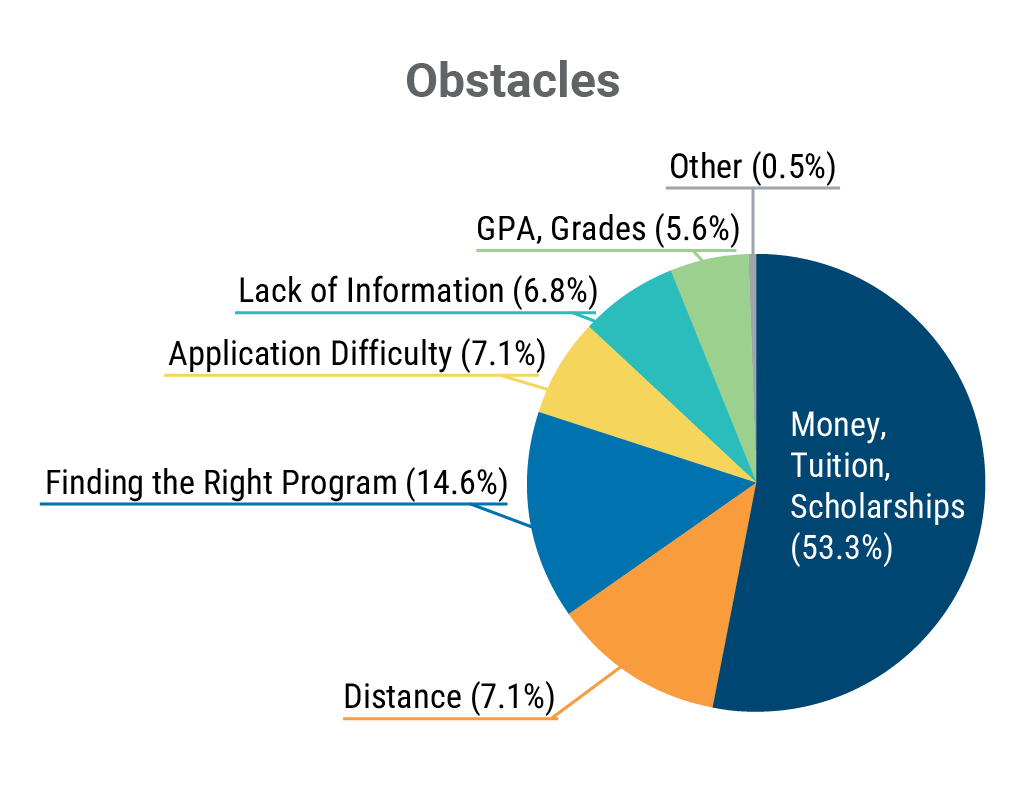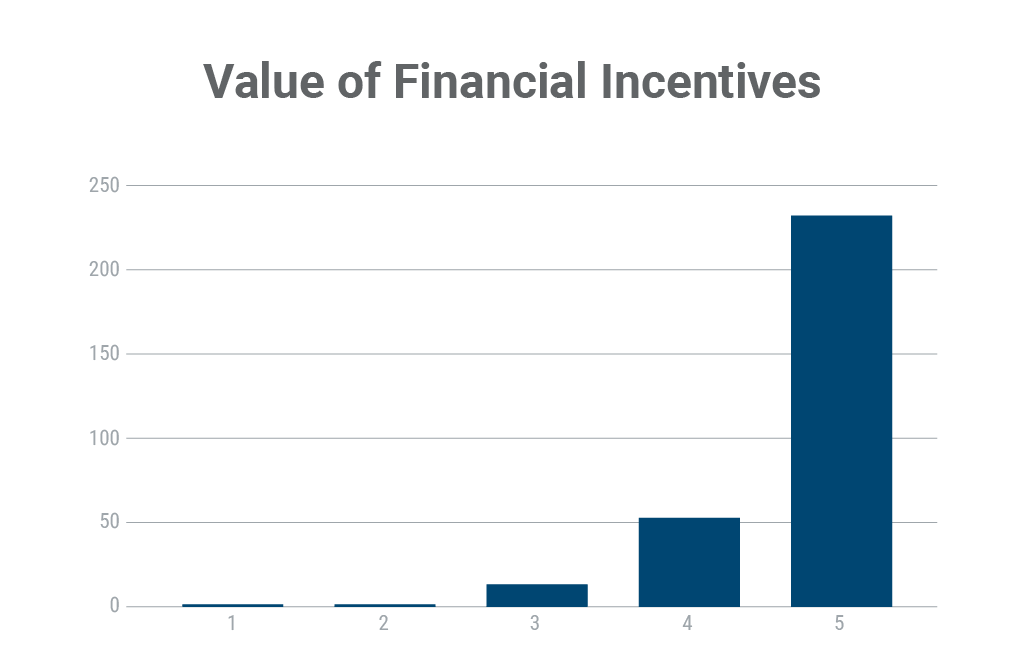What do students know about the College and Career Pathway Endorsement? What do they need in order to earn an endorsement and transition to college or the workforce successfully?
Last fall, I was curious how students across Illinois would answer these questions. During my time as the president of the Illinois Career and Technical Student Organizations Student Board, a member of the Student Advisory Council for the Illinois Education and Career Success Network, and an EdSystems youth apprentice, I have learned a lot about the endorsement framework–and I wanted to help educators and policymakers understand how they can better serve students through college and career pathways. Although this survey project was conducted with the College and Career Pathways Endorsement and its value to students in mind, the information that this survey collected is generalizable to pathways programs at large.
The College and Career Pathways Endorsement survey was shared with my peers at West Aurora High School to gather information on the kinds of incentives that could motivate students to earn the College and Career Pathways Endorsement. While the survey focused on incentives for the endorsement, it was also designed to help stakeholders in the world of high school development, administrators, teachers, parents, etc., generally understand what aid students need and what support they would like in terms of their transition from high school to either college or the workforce. My role in this project was to develop survey questions, distribute the survey, and lastly, to analyze and share the responses. This project was inspired by the currency work of my colleagues at EdSystems. Throughout the development process, I continued to gather feedback and improve the survey through conversations with team members.
Process
The process of developing this survey took place in three main parts: first, I developed themes for our questioning, next, designed and implemented a survey distribution strategy, and finally, I analyzed and coded the survey results.
Developing Themes
By reflecting on my life and experiences as a high school student as well as interviewing my peers about their experiences, I developed four key themes of questioning, which would be utilized to create all of the questions found within the survey:
- Obstacles to applying to and attending college
- Effectiveness of the community in supporting students
- Value of financial incentives, i.e, scholarships and stipends
- Value of resource-based incentives, i.e, certifications and internships
Students were asked about the general value of financial and resource-based incentives, but were given the context that this information would be used to specifically inform the development and improvement of currency for students earning a College and Career Pathway Endorsement.
It was crucial to consider these themes when creating this survey so that my peers could openly and honestly state their obstacles to success, how they are currently being helped by the community around them, what they value, and what they need to succeed in life after high school.
Survey Distribution
My main strategy for distributing this survey among my peers was to leverage the connections I had built in high school, specifically by contacting the activity director of my school and my counselor. Yet, I had little success on my first attempt. After taking a pause to re-strategize, I leveraged my most important connections from high school: my relationships with my teachers. With their help, I was able to distribute the survey to entire classrooms of students throughout the school day, covering all grade levels, and ultimately reach 300 total students at West Aurora High School. Through this process, I realized that there is no better way to get students to engage with material than to have it presented in their classrooms by their teachers!
Analysis and Coding
During the process of analyzing and coding the data, the two approaches I took were qualitative and quantitative. For open-ended survey questions, I took the route of qualitative analysis, noting prevalent genres of responses for each question on a spreadsheet and highlighting certain student responses along the way. For scale-based questions, I opted for quantitative analysis, again utilizing a spreadsheet to catalog data and code responses using the count-if function, in order to make the whole process smoother.
Engaging Stakeholders
Throughout the process of creating and distributing this survey, I was able to engage the stakeholders of my community by sharing the process of this survey’s production with them, presenting the survey to them, and sharing the ultimate results of the survey. I met with the director of career and technical education at my school in order to hear about her perspective on the College and Career Pathways Endorsement, allowing me to strengthen my knowledge on the subject and to get an initial read on the survey results and how it can be utilized to better the communities that support students, namely high schools. Following the conclusion of the survey analysis and coding, I was able to present my findings at the 2025 Illinois Education and Career Success Network Conference to educators from around the state. Additionally, I created a shareable version of the survey to help other schools engage students and stakeholders.
Results
Obstacles
Students were asked, “What, if any, are obstacles you face when considering applying to / attending college?” The most prevalent obstacles that my peers mentioned were money, finding the right program, and distance. You will notice that money is the most prevalent obstacle for the majority of students (53.3%) when compared to all other obstacles mentioned. This highlights the need for continued financial assistance for students from the institutions and businesses in their community.
Community Effectiveness
Students were asked, “How effective is your high school or community college at aiding students in navigating those obstacles?” The majority of students felt that West Aurora High School and the community colleges within the area are good (32.4%) or very effective (27.6%) at aiding students in navigating the obstacles that they mentioned in the previous question.
Financial Incentives
Students were asked to rank the importance and value of financial incentives, on a scale of 1 to 5, with 1 being not of importance and 5 being very important, as a reward for the completion of rigorous coursework and achievement. Over 200 of the 300 respondents of this survey noted that financial incentives are very important to them. This highlights the need for the continued equitable distribution of financial aid for high school students in all of our communities, along with an increased emphasis on sharing more opportunities for students.
Resource-Based Incentives
Students were asked to rank the importance and value of resource-based incentives, things like job placements, work experience, or internship opportunities, on a scale of 1 to 5, with 1 being not of importance and 5 being very important, as a reward for the completion of rigorous coursework and achievement; specifically, coursework similar to what would be required by the framework of the College and Career Pathways Endorsement. Around 250 of the 300 respondents of this question ranked resource-based incentives either a 4 or 5 on the scale of importance. This shows that students want to create results for themselves; they don’t necessarily want a handout, but rather an opportunity to engage in experiences that will allow them to create connections, develop new skills, and work in the career fields they are passionate about.
Resources & Support
Students were asked, “What resources, support, certifications, or opportunities would motivate you to join a pathways program?” The main motivators that students listed here were program placements, job placements, and apprenticeships. All opportunities that would allow them to gain hands-on and academic experience to enhance their understanding of a certain field, or to allow them to gain direct access to resources and connections that will allow them to continue on their path to success. Overall, students want long-term benefits, skills, and opportunities that they can take with them after high school is over, things that will be with them for a lifetime.
Summary
Over the past year and a half that I have spent working on this project, I have learned a great deal about the College and Career Pathways Endorsement, about how to create, distribute, and code, a survey, about how I can have an impact on my community and my peers using my voice, but most importantly I learned about how dedicated, passionate, and intelligent my peers truly are and the same can be said about most all students in today’s age. I have realized that it is the responsibility of our communities, institutions, and representatives to support students in their endeavors during high school, so that they may be prepared for life outside of the four walls that they call home for four years of their lives. This is crucial so that all students may succeed, whether they are going to college or directly into the workforce; either path is important and deserving of the utmost support and aid.
Many students said that money is one of the biggest things holding them back from going to college. They pointed out that financial help and rewards matter the most, and that shouldn’t be overlooked. But students also mentioned other kinds of support, like program and job placements, that could motivate them to get more involved in college and career programs. Overall, students want support in different ways, and it’s important to keep listening to what they say they need and be creative about our approaches to support them.
To understand what students in your community think, I encourage you to engage with the survey in your own community and in your own way!






